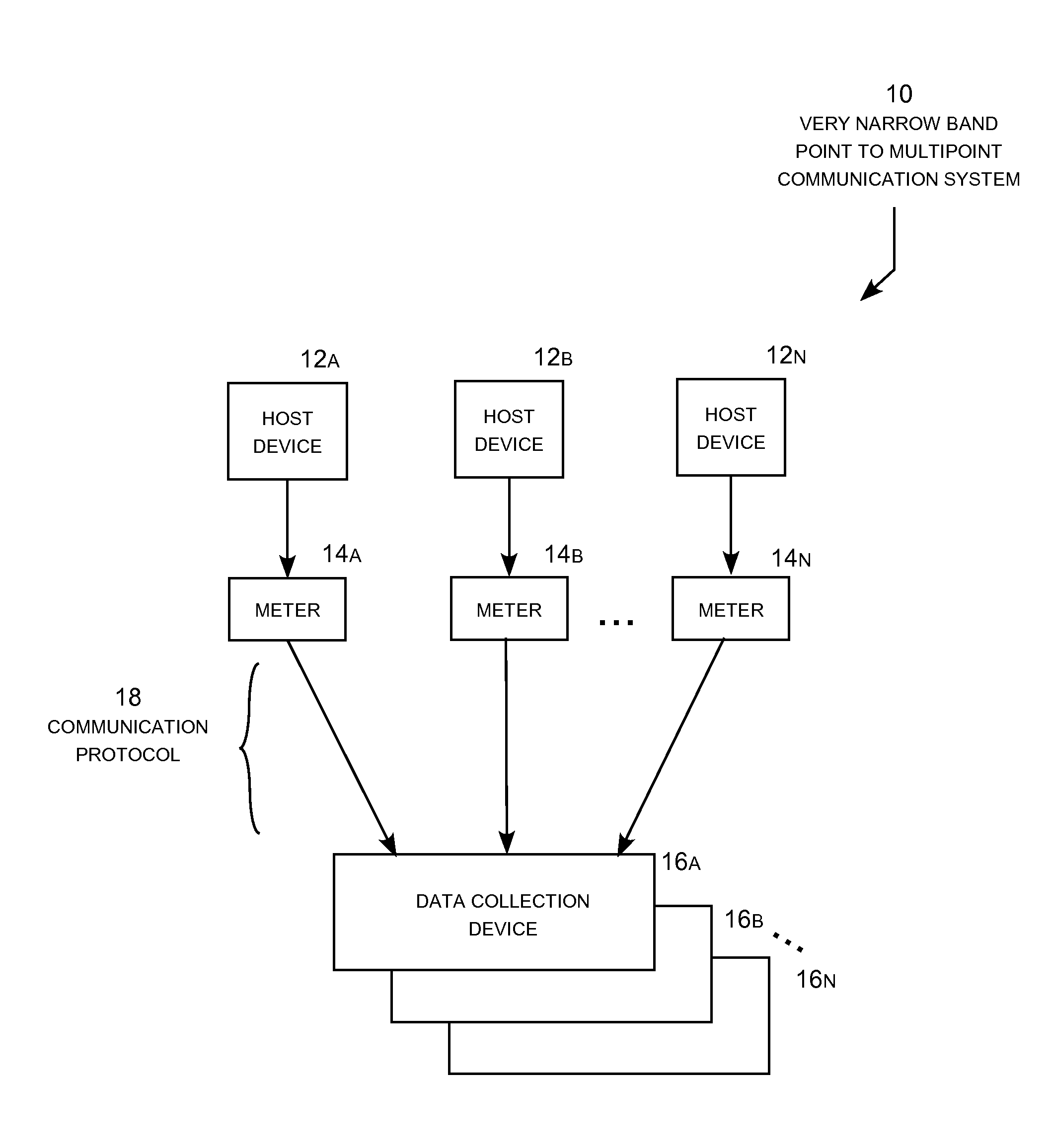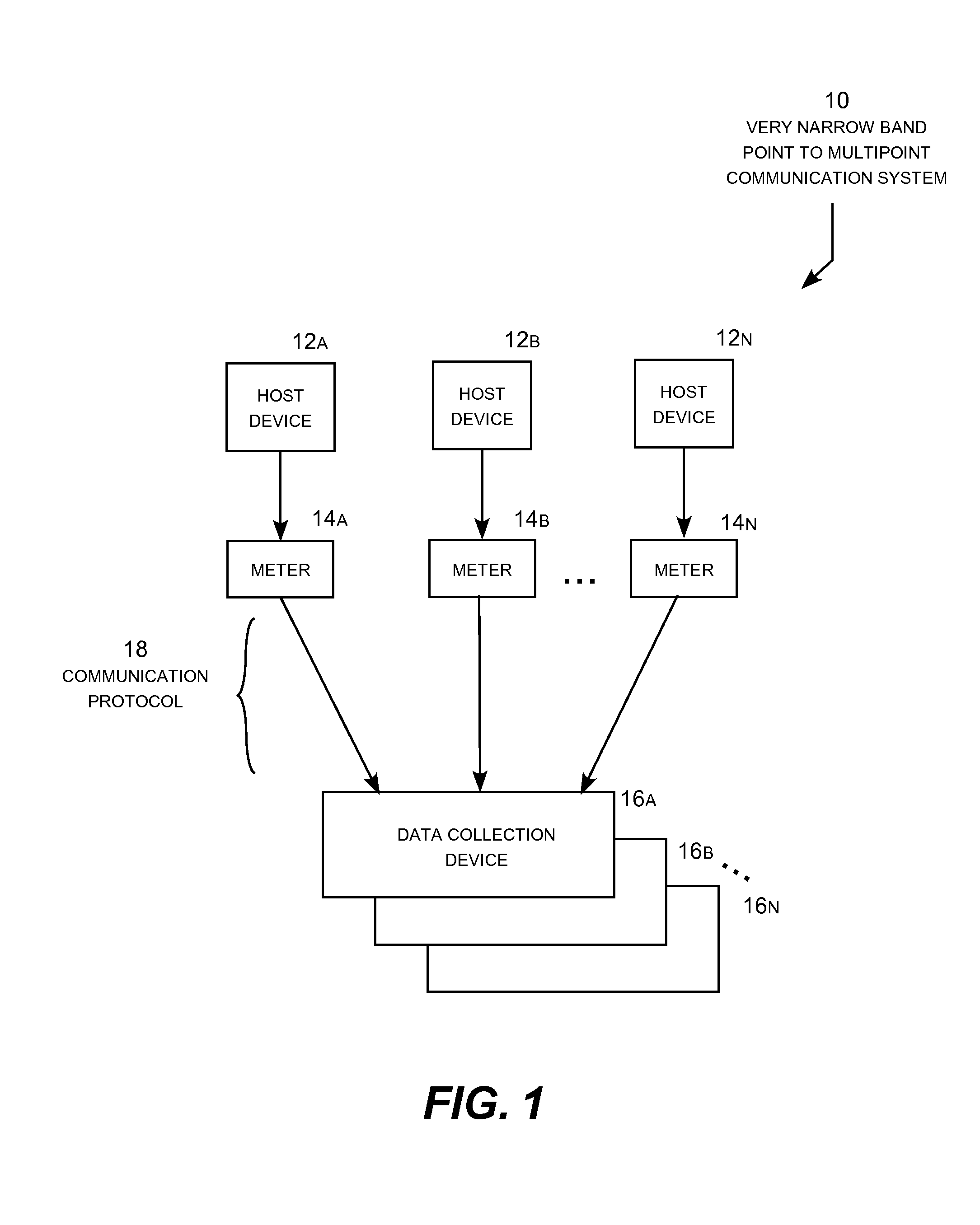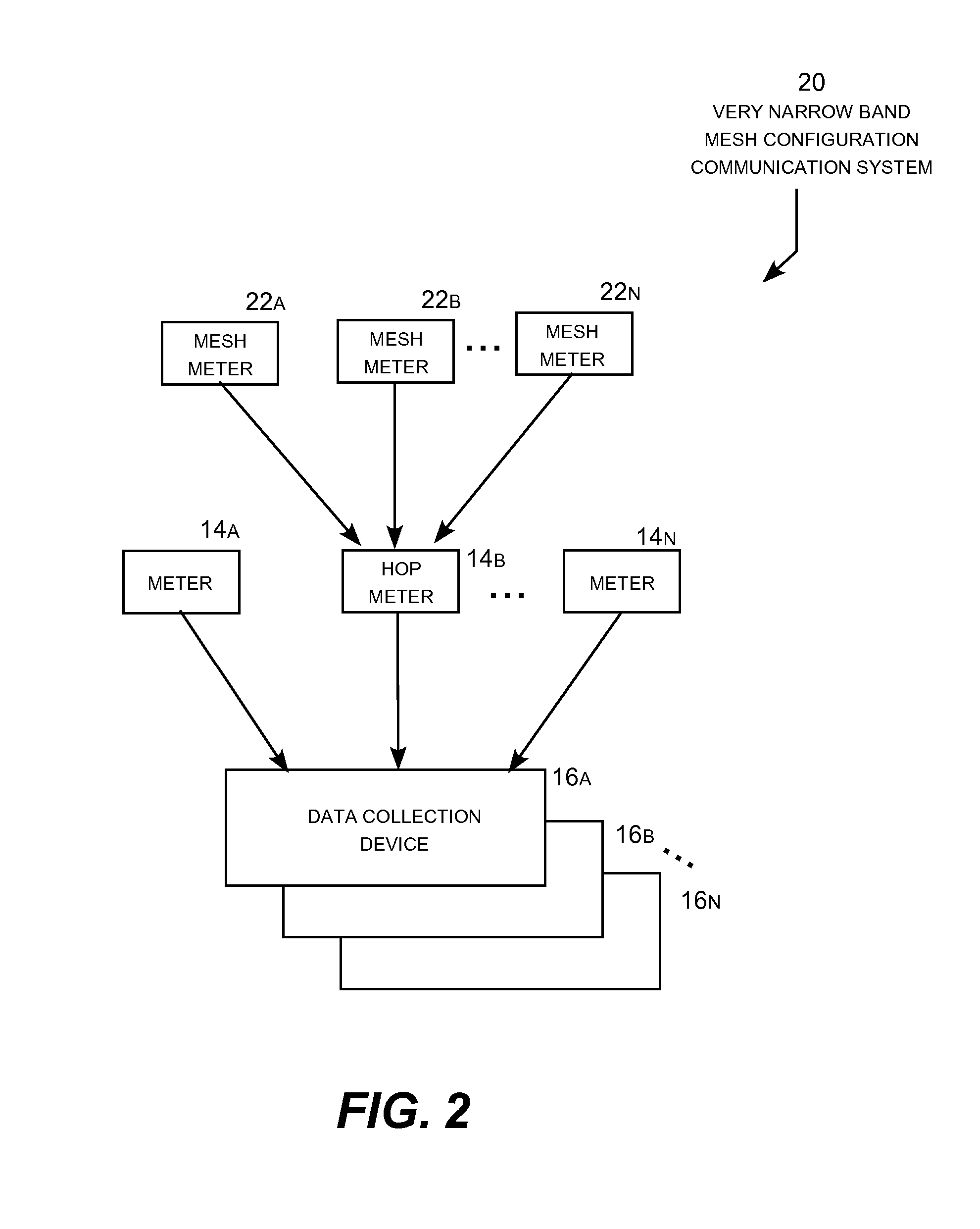Very Narrow Band Multipoint Communication System
a communication system and narrow band technology, applied in multiplex communication, frequency-division multiplex, instruments, etc., can solve the problems of inability to offer inherent performance advantages over conventional approaches to frequency or digital code hopping, and inability to achieve the inherent performance advantage of single channel in terms of channel bandwidth, so as to increase the gain, reduce transmission collisions, and increase the transmission range of transponders
- Summary
- Abstract
- Description
- Claims
- Application Information
AI Technical Summary
Benefits of technology
Problems solved by technology
Method used
Image
Examples
Embodiment Construction
[0019]The present invention may be embodied in a very narrow band point to multipoint communication system that uses single or multi-channel transponders where the multipoint receiver, also referred to as a data collection device, is more advanced in its technology than the single point transmitters and receivers. The very narrow band communication system is particularly well adapted for use in an application characterized by a relatively large number of transponders that each transmit a small amount of data infrequently at low power. The illustrative very narrow band point-to-multipoint communication system described below is specifically designed for an automatic meter reading (“AMR”) system, but may be used in other applications having similar characteristics. The principle advantages of the very narrow band communication system are greater transmission range, greater packet bandwidth, and the ability to accommodate a much larger number of transponders per data collection device ...
PUM
 Login to View More
Login to View More Abstract
Description
Claims
Application Information
 Login to View More
Login to View More - R&D
- Intellectual Property
- Life Sciences
- Materials
- Tech Scout
- Unparalleled Data Quality
- Higher Quality Content
- 60% Fewer Hallucinations
Browse by: Latest US Patents, China's latest patents, Technical Efficacy Thesaurus, Application Domain, Technology Topic, Popular Technical Reports.
© 2025 PatSnap. All rights reserved.Legal|Privacy policy|Modern Slavery Act Transparency Statement|Sitemap|About US| Contact US: help@patsnap.com



